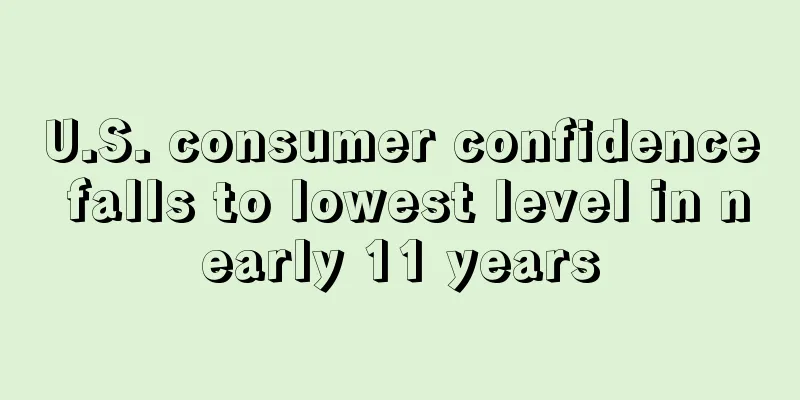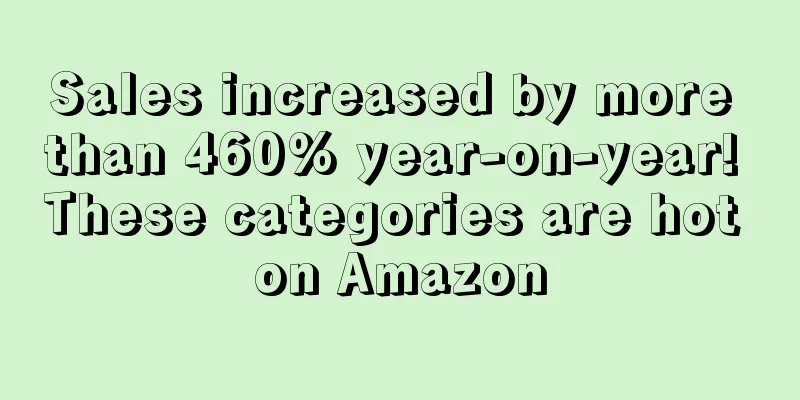U.S. consumer confidence falls to lowest level in nearly 11 years

|
U.S. consumer confidence fell to its lowest level in nearly 11 years in May as concerns about inflation persist .
According to the University of Michigan Consumer Confidence Index (MCSI) data released last Friday ( May 13), in early May 2022, the US consumer confidence index fell again, down 9.4% to 59.1%, the lowest level since 2011. However, a strong labor market and a large amount of savings still provide support for household spending, which should help US economic growth.
Some economists said that the recent deterioration in U.S. market sentiment, rising gasoline prices and stock market turmoil have affected consumer confidence indexes.
Gasoline prices resumed their upward trend this month, hitting a record high of $4.432 a gallon on Friday, according to AAA . The Federal Reserve has had to tighten monetary policy sharply to reduce the impact of inflation, sparking a massive sell-off on Wall Street.
"Consumer confidence has been a poor guide to consumption growth in recent years, so we would not read too much into this signal," said Michael Pierce, an economist at the University of California, Berkeley. "Just because consumers don't like to buy higher-priced goods and supplies are limited doesn't mean they won't make those purchases."
Economists are not concerned about this situation, noting that consumers have accumulated at least $2 trillion in excess savings during the COVID-19 pandemic .
Some people worry that high inflation and the Federal Reserve's interest rate hikes that began in March could slow economic growth or even push the economy into recession. However, under the pressure of a record trade deficit, although the US economy contracted in the first quarter, domestic demand in the United States remained strong.
While inflationary pressures in the United States are likely to persist, there are growing signs that price pressures have peaked.
A separate report from the Labor Department showed prices for imported goods were unexpectedly flat in April after rising 2.9% in March as a drop in the cost of petroleum offset increases in the prices of food and other products.
Economists had forecast that prices of imported products excluding tariffs would climb 0.6%. From April 2021 to April 2022, prices of imported products rose 12.0%.
With oil prices higher in May, monthly imports, consumer and producer prices are likely to pick up. Annual inflation is expected to continue to edge lower but is likely to remain above the Fed’s 2% target.
Therefore, sellers in the US market do not need to worry too much, as domestic consumer power remains strong, and the decline in unemployment and wage growth will also boost consumer spending. US Consumer Confidence Index inflation |
>>: Bezos slams Biden administration's tax hikes to curb inflation
Recommend
Cross-border recruitment has increased significantly, and some operations positions have a monthly salary of 40,000+
During the annual peak recruitment season of Marc...
Russian e-commerce giant Ozon signs delivery agreement with Kazpost
During the pandemic, e-commerce and online servic...
SHEIN and Arabic singer Balqees Fathi launch new Ramadan collection
Global online fashion retailer SHEIN has teamed u...
The top 10 e-commerce websites in the United States are released! Amazon's sales are 6 times higher than Walmart's
The 2020 epidemic has led to the booming developm...
Shenzhen Dama’s former senior executive confessed: After helping to raise $670 million, the company “set up a trap” to force him out
"For your future career, don't fight the...
What is bruceteleky? bruceteleky Review, Features
bruceteleky is a publisher and distributor of art ...
What is Cross-border Business School? Cross-border Business School Review, Features
The Cross-border Business School is a professiona...
The cross-border service provider emptied the company overnight and the employees called the police!
A few days ago, an employee of a cross-border ser...
The first IPO in the Year of the Snake passed the review, and Hangzhou will make huge profits with big sales
Zhongce Rubber's initial public offering appl...
Walmart slashes prices for apparel products: Consumers are unwilling to spend money amid inflation
As American consumers tighten their belts, major ...
What is Chuangsiji Cross-border FBA Logistics? Chuangsiji Cross-border FBA Logistics Review, Features
Chuangsiji Cross-border FBA Logistics is a new ge...
What is Global Shopping Knight Privileges? Global Shopping Knight Privileges Review, Features
Global Shopping Knight Privileges is a membership-...
Imported goods also have their own cold chain. In the summer, Cainiao bonded warehouse launched a constant temperature cold chain delivery service
Since Cainiao announced the launch of the " ...
New platform power: British e-commerce platform Fruugo's Black Friday sales increased by 50%
It is reported that the global sales of British e...
What is Goal Zero? Goal Zero Review, Features
<span data-docs-delta="[[20,{"gallery"...









